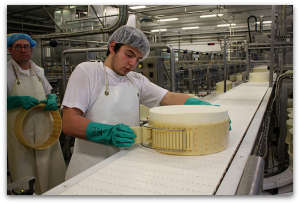 The duties that Italian cheese companies have to support in order to sell the much requested and appreciated made in Italy products in the main markets of the rest of the world are high: 10% to 20% in the United States, 8% to 12% in China, 5% in the United Arab Emirates, even 30% in India and 55% in Iran. Assolatte, which represents 220 Companies and a sector that realises 3 billion Euros of sales abroad, with a growth trend year on year, reminds this burdensome cost.
The duties that Italian cheese companies have to support in order to sell the much requested and appreciated made in Italy products in the main markets of the rest of the world are high: 10% to 20% in the United States, 8% to 12% in China, 5% in the United Arab Emirates, even 30% in India and 55% in Iran. Assolatte, which represents 220 Companies and a sector that realises 3 billion Euros of sales abroad, with a growth trend year on year, reminds this burdensome cost.
In recent months, the barriers to entry that Italian dairy companies encounter on foreign markets represent a strategic problem, because exports have become essential for Italian producers who find fewer opportunities on the domestic market. Even the increasingly limited sales of milk to drink motivate to use milk for cheese production.
Adriano Hribal, managing director of Assolatte, commented: ‘Duties have a greater impact on high-value products than low-cost ones. This makes Italian cheeses more exposed to the effects of these actual ‘taxes’ on exports. Paradoxically, exporting excellences, cheeses that everyone appreciates and try to imitate, makes us the Country more damaged by duties. Until we get their cancellation, our cheeses will never be competitive with those Americans or New Zealanders, characterised by lower value and with lower taxes’.
Assolatte adds that there are also numerous non-tariff barriers, starting from health regulations, which are complicated and inhomogeneous, weigh down the process for export, resulting in additional costs for Companies. The examples are many. Assolatte reminds that only in recent months Italian companies have had to deal with the more restrictive import rules adopted by the US FMSA; the veto concerning blue cheeses imposed by China (later cancelled); the nutrition labels introduced in France, Israel, and Chile; restrictions on imports of dairy products into Algeria; the bureaucratic procedures imposed by China, Brazil, and Korea to obtain authorization for production facilities.
